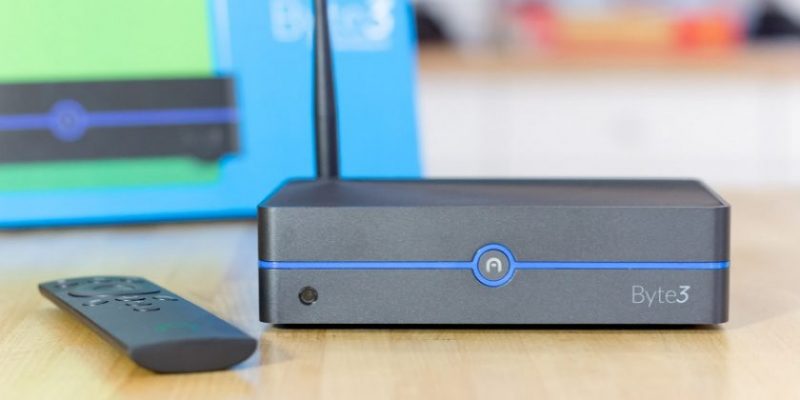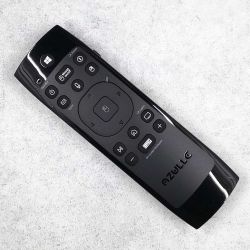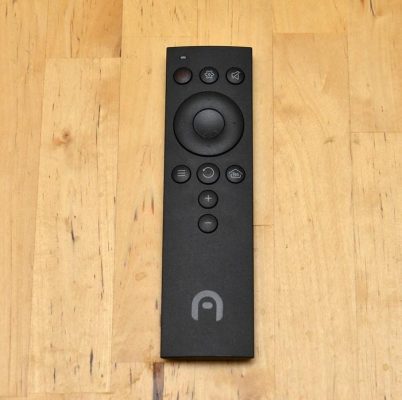What is good in Azulle Byte3 fanless mini desktop PC review? Can you stream Netfilx, YouTube or Hulu on it? Azulle powers the Byte3 desktop mini PC with a 64-bit Quad-Core Intel Apollo Lake processor making the Byte3 not only lighter but more powerful. Azulle’s Byte3 Fanless Mini Desktop PC is designed to keep up with today’s ever-evolving mini-PC user and the multi-tasker that needs to get it all done – and done now.
Use the HD or VGA port to connect to a TV or monitor. With 4K at 60 FPS, you can stream Netflix, YouTube and Amazon Prime; or use Microsoft Office to complete any business, school, or leisure-time task. The Byte3 mini desktop computer is the feather-weight champion of fast, functional, user-friendly and affordable technology. The Byte3 fanless desktop PC comes loaded with Windows 10 Pro operating system. Discover more on Azulle Byte3 fanless mini desktop PC review.

Pros:
- Compact System
- Fanless – No Noise
- Multiple Storage Expansion Options
- Includes Windows 10 Pro
- 4K Video Playback
Cons:
- 32GB Model Runs Low On Space
- No NVMe Support
Azulle Byte3 fanless mini desktop PC Specs
Find below the Azulle Byte3 specs –
Processor: Intel Apollo Lake J3355 Dual-Core 2.0Ghz to 2.5Ghz/J3455 Quad-Core 1.5Ghz to 2.3Ghz
Operating System: Windows 10 Pro/Linux
RAM: 2GB/4GB/8GB
Storage: eMMC 32GB/64GB, 2.5″ & M.2 Supported
WiFi: Dual-Band 2.4Ghz/5.0Ghz
GPU: Intel HD Graphics 500
Ethernet: 1Gbps
Bluetooth: 4.0
VGA Output: 1080p
HDMI Output: 2.0, 4K @ 60fps
USB Ports: 3 x 3.0, 1 x 2.0, 1 x Type-C
SD Card Slot: Up to 256GB
M.2 Slot: 2280 SATA up to 320GB
SATA: 2.5″ SSD up to 512GB
Audio Output: 3.5mm Audio jack
Power Supply: 12V
Dimensions: 5.6in (W) x 4in (D) x 1.5in (H)
Azulle Byte3 price and availability
The Azulle Byte3 Fanless Mini Desktop PC ($239) is a compact mini PC that lets you put a desktop in places you may not have thought a PC would go, like your home theater setup. A Windows PC with a fanless, silent design, it’s perfect for streaming video and browsing online with your TV as the monitor.
The Byte3 is available with a few different configuration options, which is nice to see, as it lets you pick and choose a bit with regards to price and performance. CPU options include either the dual-core J3355 or the quad-core J3455, neither of which support hyperthreading, but each supporting 2MB of cache and a 10W TDP.
Keep in mind that this system is completely fanless, so the 10W TDP is probably all Azulle could get away with without some active cooling. Other options include a mix of 2GB-8GB of system memory, paired up with either 32GB or 64GB of eMMC flash storage. Windows 10 Pro or an open-source Linux OS are available, and the ability to bundle with wireless peripherals and webcams is also available. You can even select new or used when purchasing directly from the Azulle website.
Azulle Byte3 fanless mini desktop PC review
Design
The Byte3 is a compact desktop in the same vein as the Intel NUC, a desktop PC crammed into a small, square-shaped chassis. The mini PC weighs a scant 14 ounces and measures 5.6 in x 4 in x 1.5 inches, with a small Wi-Fi antenna attached in the back. It’s similar, in some respects, to the Lenovo ThinkCentre M710q Tiny, which uses a compact square-shaped chassis and an external Wi-Fi antenna for better wireless performance. But inside, it’s more akin to the Zotac Zbox Pico PI225, with an Intel Celeron processor and a fanless design that uses passive cooling to keep operations quiet.
Memory and storage
We cracked open the Byte3 by easily removing four screws and were greeted by a desolate expanse. It turns out all the installed components are on the underbelly of the motherboard, so there’s not much to see on top of it aside from a lone M.2 SATA port and a SATA cable for adding a 2.5-inch drive. It’s pretty sweet to have two storage upgrade options, and with the price of SSDs these days, you could easily have yourself a nice little box with plenty of fast storage. We tried removing the motherboard, but we didn’t want to break the attachments. We were mostly curious to see if the RAM on the underbelly was soldered to the motherboard or removable, but tablet-level RAM is usually not upgradeable. However, 4GB of memory should suffice for this PC’s intended functions.
Ports and connectivity
One of the most enticing aspects of the Byte3 is its port selection, which offers ample connectivity for entertainment and business use alike. On the right side is a pair of USB ports – one USB 3.0 port and one USB 2.0 – along with an SD card slot.
On the back of the Byte3 are two USB 3.0 ports and a USB Type-C port, along with a 3.5mm audio jack, an HDMI output for video and audio and a VGA output for connecting older monitors and projectors. An Ethernet port offers wired networking, and an attached Wi-Fi antenna gives you wireless-AC connectivity. A Kensington Lock slot lets you secure the small PC against anyone who might be tempted to snatch it.
Remote Control feature
he basic remote that is included with the Byte3 has dedicated buttons to toggle power, adjust volume, mute volume, launch Windows settings, go back, and switch tabs. There’s also a 5-way nav button in the center that you can use to navigate fields but it does not let you move the mouse pointer around on the screen.
Azulle sells a more advanced remote called the Lynk controller which has extra features including a small keyboard on the back of the remote and an air mouse feature that lets you wave the remote in the air to move the onscreen cursor/mouse. The remote even has backlight feature but it’s only for the buttons on the top of the remote and not for the keyboard on the back.
How to setup Azulle Byte3 fanless mini desktop PC?
I was sent the 4GB Ram Quad-Core Apollo Lake J3455 configuration of the Byte3 which comes preinstalled with Windows 10 Pro. My idea for testing the Byte3 was to connect it to my Denon AV receiver to use for streaming Netflix, Hulu, Amazon Video, and other content on my 65-inch Vizio TV in my basement living room.
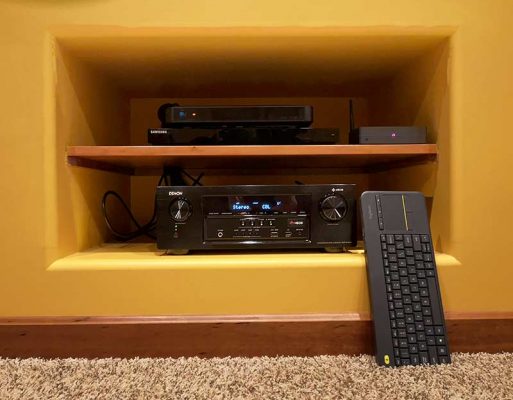
I was able to easily connect the Azulle to my AV receiver using an HDMI cable (not included). It shouldn’t come as a surprise that also not included with the Byte3 is a mouse and a keyboard. Since my plan was to review the Byte3 as a media player/streaming device, I decided to order a small wireless keyboard. I settled on a Logitech K400 wireless keyboard mainly because it was really cheap and had a built-in touchpad which I hoped would make it easier to navigate Windows from the couch.
The first time I powered the Byte3 on, I was impressed by how quickly it booted up and has booted up since then. Granted, it is Windows 10 we’re talking about, but the experience using this operating system hasn’t been painful on this little PC at all. Note that if you don’t want to run Windows, you can get a Byte3 with Linux or with no OS installed at all. I wish it macOS was an option
I was also happy that the Byte3 doesn’t have a fan, so it is completely silent, just the way I like my computers to be. I’m such an anti-fan girl (see what I did there?), that I returned a brand new 2018 MacBook Air that I purchased several weeks ago just because I didn’t realize that it had a fan in it. Yes, I’m weird about noise.
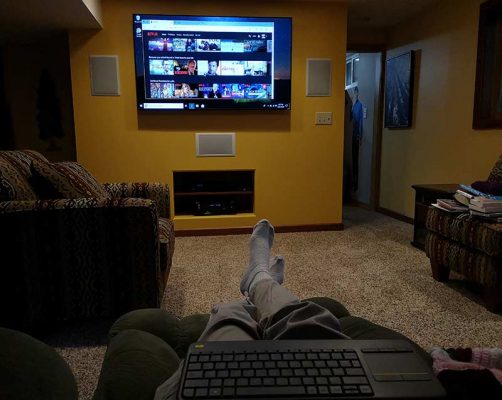
I tested the Byte3 while surfing websites using Chrome and other browsers, as well as watching Netflix, Youtube, Hulu, Philo, and other streaming services. All in all, I was really impressed. This little computer handled media streaming via WiFi very well to my 65-inch Vizio TV.

The Azulle even handled streaming 4K video content which was a nice surprise for such a small PC like this one.
I didn’t run any speed tests on the Byte3, so if you want that kind of technical information you can find other reviews that include all sorts of charts and data that usually make my eyes glaze over. I also didn’t test this PC with any high-end games because it’s not designed for them and I’m not a gamer.
Azulle Byte3 fanless mini desktop PC stream performance review
To see how the Byte3 performs, we rounded up the test results from other small-form-factor and micro-cube PCs for comparison. Keep your expectations in check: Mini-PCs perform similarly to tablets, so they are generally quite slow compared to regular desktops and laptops. The most direct (and similarly priced) competitor to the Byte3 is Azulle’s own Byte Plus.
We are also throwing in the ECS Liva Z, which we tested in June, and the “Arches Canyon” NUC from Intel, which is very close in specs and price to the Byte3. We also added a Shuttle XPC Nano NC02U and two Compute Sticks from Intel that respectively feature a Core m3 CPU and an Atom X5 CPU, but lack Windows 10 as standard equipment.
Cinebench R15
Maxon’s CPU-crunching Cinebench R15 is a processor workout that’s fully threaded to make use of all available processor cores and threads while using the CPU rather than GPU to render a complex image. The result is a proprietary score indicating a PC’s suitability for processor-intensive workloads. Note that nobody in their right mind would ever buy a PC like this for workstation-style rendering, but it’s helpful in seeing the relative power of a CPU compared to those used by other systems in its class.
The Byte3’s processor is Intel’s Celeron N3450, a 1.1GHz (2.2GHz turbo) quad-core with integrated graphics. In this test, it performed admirably, staking out a middle ground between the Atom CPUs and the much faster Core i5 in the Liva Z computer. That’s about what we’d expect, given the Byte3’s upgrade to a Celeron CPU over its Atom-bearing Byte Plus predecessor. That said, this Celeron chip obviously can’t compete with a Core-family mobile chip.
Graphics Tests
Our first graphics test is Futuremark’s 3DMark, which measures relative graphics muscle by rendering sequences of highly detailed, gaming-style 3D graphics that emphasize particles and lighting. The low-resolution Cloud Gate preset (meant for entry-level PCs) isn’t much of a challenge for today’s systems, but the Fire Strike Extreme preset makes even high-end gaming systems break a sweat. We’ll just report the Cloud Gate numbers here; the Fire Strike Extreme subtest is not very telling when everything you’re looking at has Intel integrated graphics.
This chart paints a pretty clear picture: the Byte3 and its Intel HD Graphics 500 had the worst performance of all our wee PCs, albeit by a modest margin. Frankly, none of these desktops are good for more than very light gaming; the games included with Windows should run adequately, but you won’t be playing Call of Duty any time soon.
Next came a grueling pair of DirectX 11 3D gaming simulations, Heaven 4.0 and Valley 1.0. These popular tests from Unigine push graphics processors to the limit in complex flyovers of an aerial steampunk village and a stormy nature scene, respectively. We test desktops at medium image-quality settings at 1,366×768 resolution and again at top or ultra quality settings at 1,920×1,080.
The Byte3 redeemed itself somewhat in this test, as long as you call running at 5 frames per second when the competition is running at 4fps a victory. As you can see, all of these PCs perform terribly with demanding 3D titles at 1080p, and can barely muster a handful of the 30fps generally accepted as the threshold for smooth gameplay. They’re more suited to playing solitaire and watching videos.
That darned Intel NUC again performed roughly neck-and-neck with the Byte3 in this test. Naturally, it outshone the Atom-based PCs, but it was again shellacked by the Liva Z and its robust laptop CPU. None of the systems, again, were capable of 1080p play, which is not a big surprise. These are not the gaming PCs your grandkids want for Christmas.
Multimedia Tests
Cinebench is often a good predictor of our Handbrake video-editing test, another tough, threaded workout that’s highly CPU-dependent. In it, we put a stopwatch on test systems as they transcode a standard five-minute clip of 1080p video (the Pixar short Dug’s Special Mission) to a smartphone format. Because this is a timed test, lower results are better.
The results from this test look similar to the previous results, as the Byte3 stays in the middle. It almost halved the Byte Plus’ encoding time, which is quite a performance leap. On the other end of the spectrum, the Core i5 CPU in the Liva Z halved the encoding time of the “Apollo Lake” Celeron in the Byte3. Intel’s “Arches Canyon” NUC inched past the Byte3 here; its quad-core Celeron is pretty evenly matched to the Azulle’s.
We also run a custom Adobe Photoshop image-editing benchmark. Using Photoshop version CS6, we apply a series of 11 complex filters and effects to a standard JPEG test image. We time each operation and, at the end, add up the total execution time. As with Handbrake, lower times are better here.
Once again the Celeron CPU in the Byte3 performed capably, coming in right between the super-slow Atom CPUs and the beefy Core i5. This time, the Byte3 outpaced the similarly configured Intel NUC.
The Media Playback Experience
The big hype about the Byte3 is that it’s capable of 4K (3,840×2,160) video playback, which is usually not possible with a slower processor. Rendering 4K video requires a modicum of CPU horsepower, so it’s not something we’ve seen much of on PCs this small. After testing, though, we can report it works just fine.
We tested a few 4K videos that we copied to the system’s eMMC flash, and they were all buttery smooth. Even though Azulle and Intel say the Byte3 supports “4K content,” that phrase is often a misleading buzzword—but the buzz is true in this case.
We also tested a few 4K videos on YouTube and they also ran smoothly, though there was a bit of buffering when the videos first loaded.
This capability could be very useful for folks looking to run some high-res digital signage, as 4K is the new must-have in the marketing world, and it really sets the Byte3 apart from most of its older competitors. Most of these tiny PCs do not have the brawn to play run a 4K video smoothly, if at all.
The included remote is also pretty handy for operating the unit from afar. It only offers a few basic commands, but its simplicity is actually welcome. You can adjust or mute the volume; activate the shutdown window, letting you make a selection before the machine powers down; tab between open windows; and even open the Start Menu. It’s just enough to navigate, but easy to remember.
